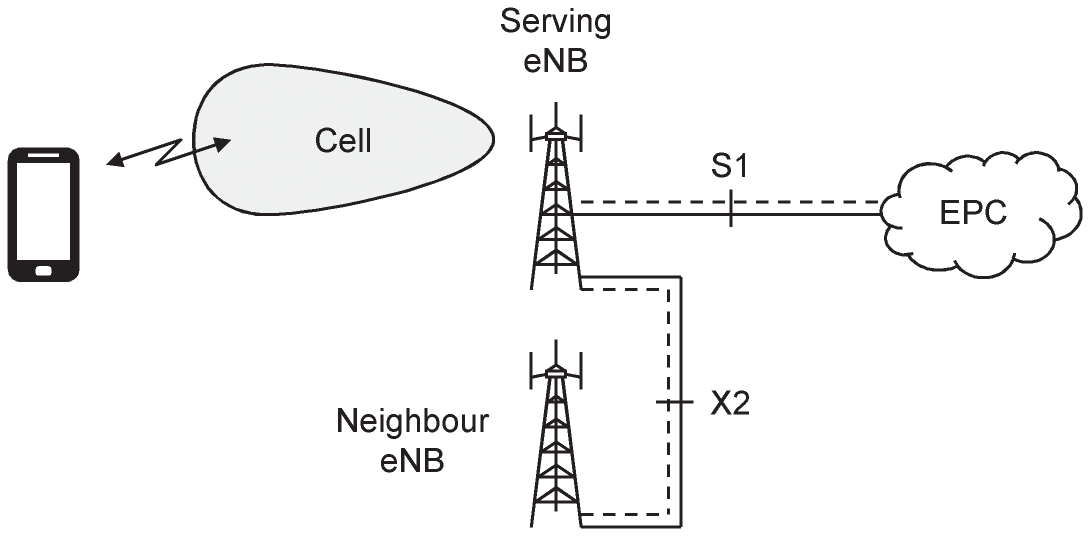3Architecture of the Radio Access Network
Our introduction to the radio access network (RAN) follows a similar pattern to the material on the core. After reviewing the evolved UMTS terrestrial radio access network, we will introduce the next‐generation Node B, and discuss its internal division into central and distributed units. We will then move on to the next‐generation radio access network, introduce the concept of multi‐radio dual connectivity and detail the architectural options that the radio access network supports.
Several specifications are relevant to this chapter, in the same way as before. The most important are the descriptions of the air interface and the radio access network, TS 38.300 [1] and TS 38.401 [2], and of dual connectivity between 5G and LTE, TS 37.340 [3].
3.1 The Evolved UMTS Terrestrial Radio Access Network
3.1.1 Release 8 Architecture
Figure 3.1 shows the architecture of the evolved UMTS terrestrial radio access network (E-UTRAN) in 3GPP Releases 8 and 9 [4]. There is just one type of network element, namely the base station, which is officially known as the evolved Node B (eNB). The eNB's tasks include radio transmission and reception, digital signal processing and the delivery of signalling messages that control the mobile's radio communications.

Figure 3.1 Architecture of the evolved UMTS terrestrial radio access network in Releases 8 and ...
Get An Introduction to 5G now with the O’Reilly learning platform.
O’Reilly members experience books, live events, courses curated by job role, and more from O’Reilly and nearly 200 top publishers.

